Sara Gunnarsson
LuMaMi28: Real-Time Millimeter-Wave Massive MIMO Systems with Antenna Selection
Sep 07, 2021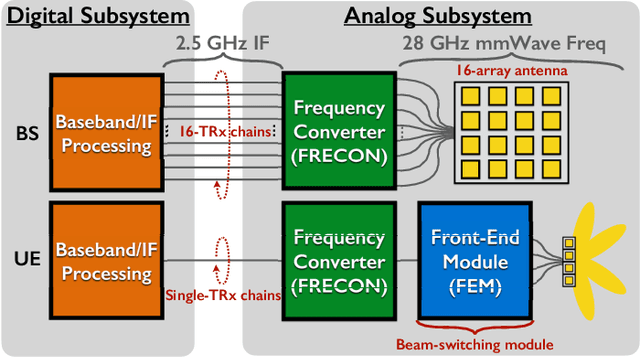
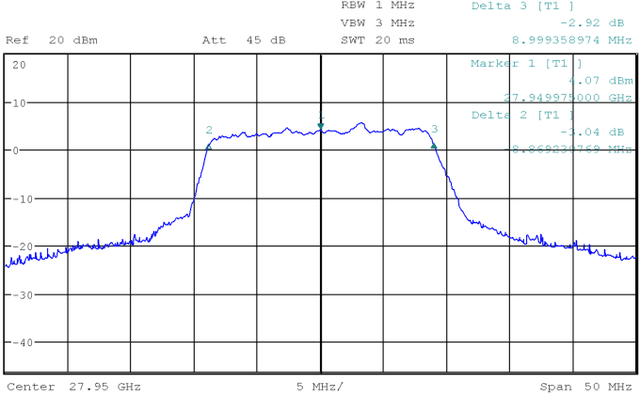
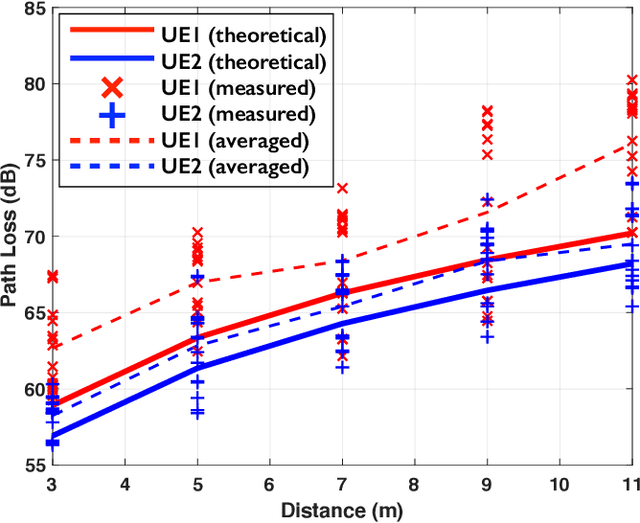
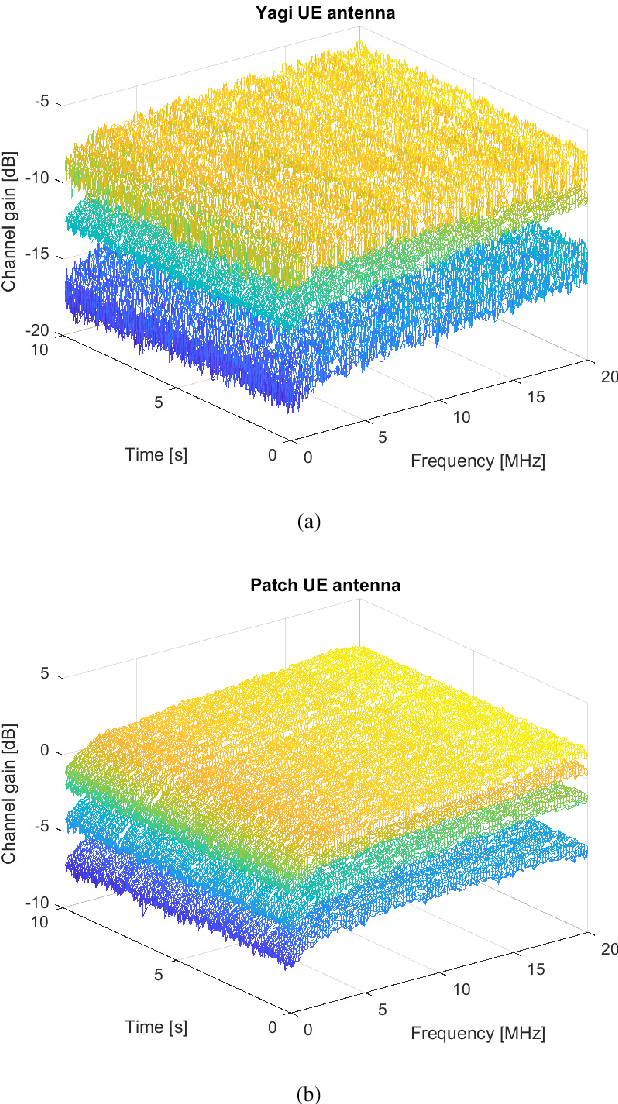
Abstract:This paper presents LuMaMi28, a real-time 28 GHz massive multiple-input multiple-output (MIMO) testbed. In this testbed, the base station has 16 transceiver chains with a fully-digital beamforming architecture (with different pre-coding algorithms) and simultaneously supports multiple user equipments (UEs) with spatial multiplexing. The UEs are equipped with a beam-switchable antenna array for real-time antenna selection where the one with the highest channel magnitude, out of four pre-defined beams, is selected. For the beam-switchable antenna array, we consider two kinds of UE antennas, with different beam-width and different peak-gain. Based on this testbed, we provide measurement results for millimeter-wave (mmWave) massive MIMO performance in different real-life scenarios with static and mobile UEs. We explore the potential benefit of the mmWave massive MIMO systems with antenna selection based on measured channel data, and discuss the performance results through real-time measurements.
Sensing and Classification Using Massive MIMO: A Tensor Decomposition-Based Approach
Sep 02, 2021
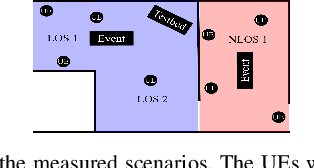
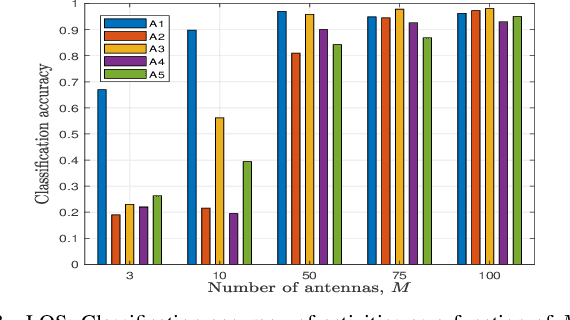
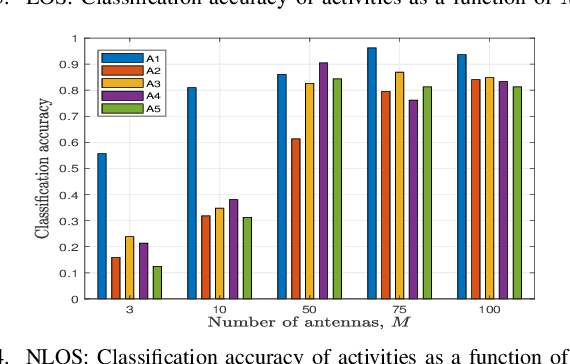
Abstract:Wireless-based activity sensing has gained significant attention due to its wide range of applications. We investigate radio-based multi-class classification of human activities using massive multiple-input multiple-output (MIMO) channel measurements in line-of-sight and non line-of-sight scenarios. We propose a tensor decomposition-based algorithm to extract features by exploiting the complex correlation characteristics across time, frequency, and space from channel tensors formed from the measurements, followed by a neural network that learns the relationship between the input features and output target labels. Through evaluations of real measurement data, it is demonstrated that the classification accuracy using a massive MIMO array achieves significantly better results compared to the state-of-the-art even for a smaller experimental data set.
Experimental Exploration of Unlicensed Sub-GHz Massive MIMO for Massive Internet-of-Things
May 26, 2021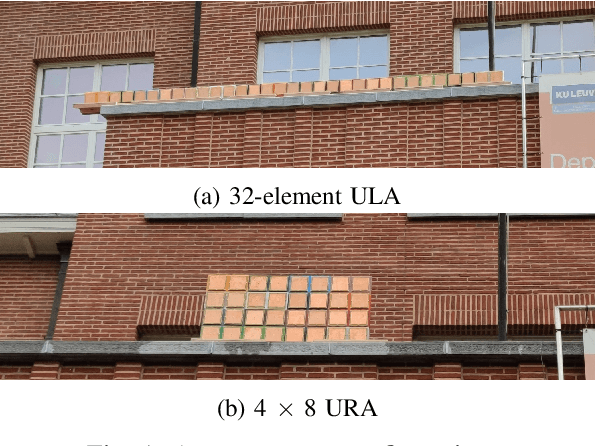
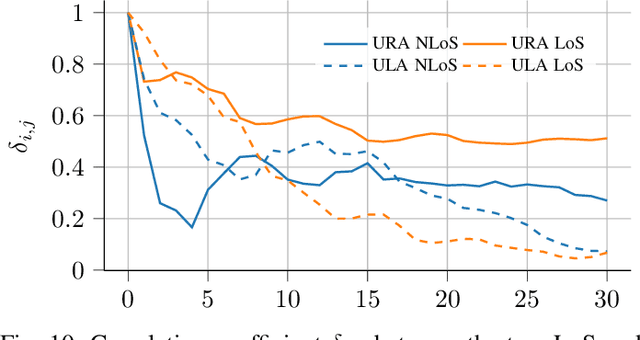
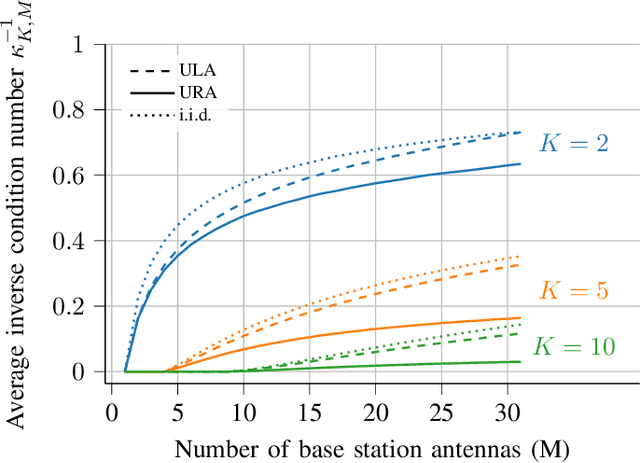
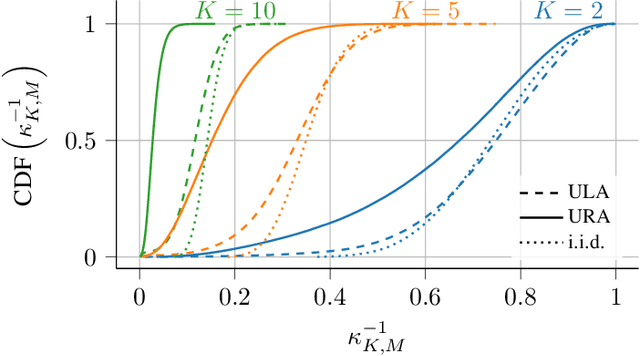
Abstract:Due to the increase of Internet-of-Things (IoT) devices, IoT networks are getting overcrowded. Networks can be extended with more gateways, increasing the number of supported devices. However, as investigated in this work, massive MIMO has the potential to increase the number of simultaneous connections, while also lowering the energy expenditure of these devices. We present a study of the channel characteristics of massive MIMO in the unlicensed sub-GHz band. The goal is to support IoT applications with strict requirements in terms of number of devices, power consumption, and reliability. The assessment is based on experimental measurements using both a uniform linear and a rectangular array. Our study demonstrates and validates the advantages of deploying massive MIMO gateways to serve IoT nodes. While the results are general, here we specifically focus on static nodes. The array gain and channel hardening effect yield opportunities to lower the transmit-power of IoT nodes while also increasing reliability. The exploration confirms that exploiting large arrays brings great opportunities to connect a massive number of IoT devices by separating the nodes in the spatial domain. In addition, we give an outlook on how static IoT nodes could be scheduled based on partial channel state information.
Moving Object Classification with a Sub-6 GHz Massive MIMO Array using Real Data
Feb 09, 2021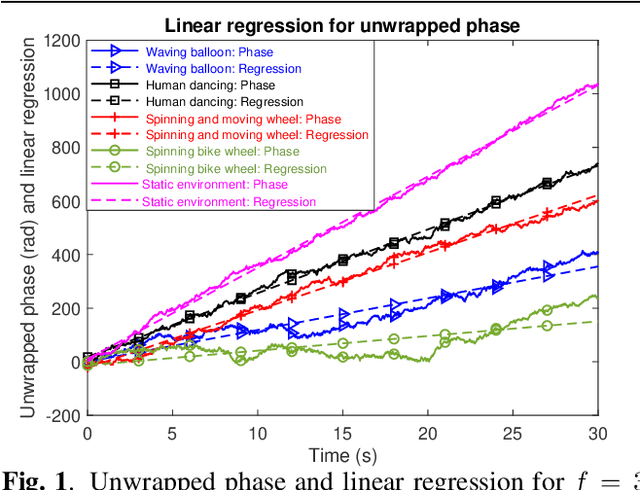
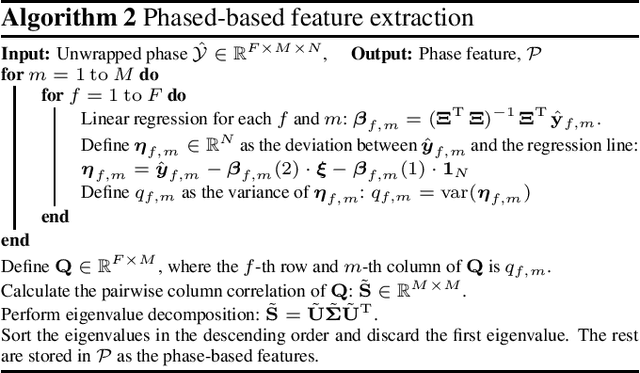
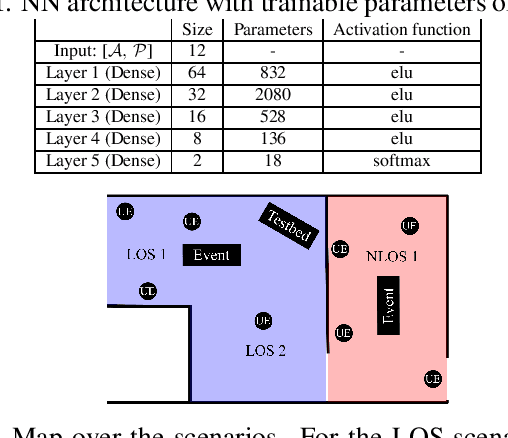
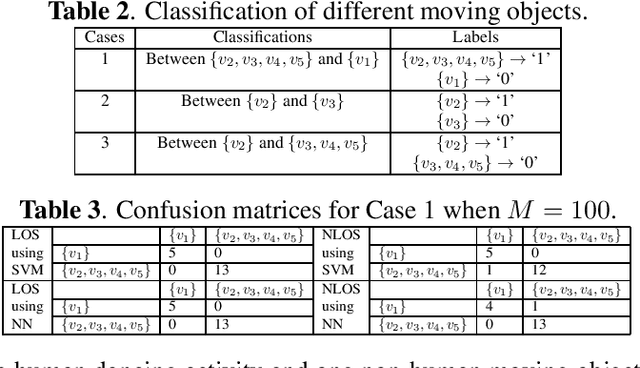
Abstract:Classification between different activities in an indoor environment using wireless signals is an emerging technology for various applications, including intrusion detection, patient care, and smart home. Researchers have shown different methods to classify activities and their potential benefits by utilizing WiFi signals. In this paper, we analyze classification of moving objects by employing machine learning on real data from a massive multi-input-multi-output (MIMO) system in an indoor environment. We conduct measurements for different activities in both line-of-sight and non line-of-sight scenarios with a massive MIMO testbed operating at 3.7 GHz. We propose algorithms to exploit amplitude and phase-based features classification task. For the considered setup, we benchmark the classification performance and show that we can achieve up to 98% accuracy using real massive MIMO data, even with a small number of experiments. Furthermore, we demonstrate the gain in performance results with a massive MIMO system as compared with that of a limited number of antennas such as in WiFi devices.
 Add to Chrome
Add to Chrome Add to Firefox
Add to Firefox Add to Edge
Add to Edge